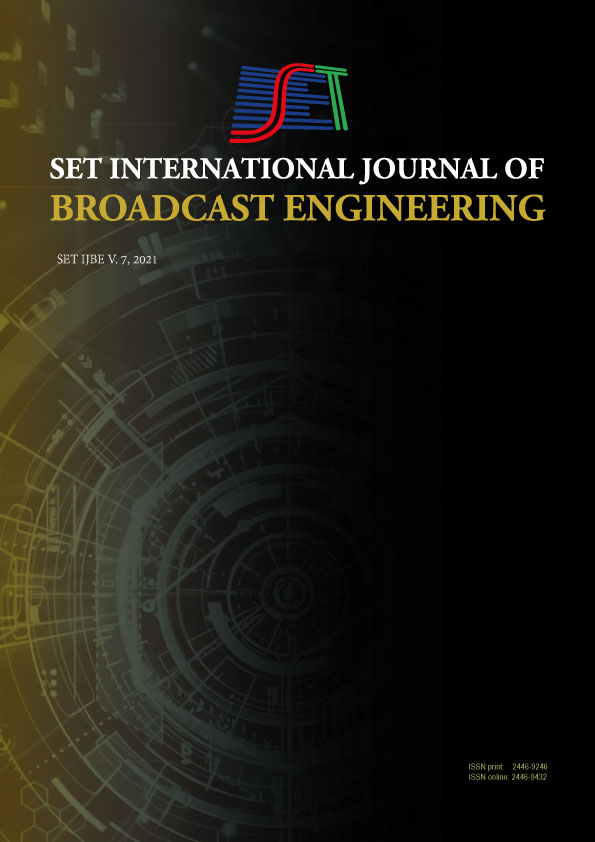Versatile Video Coding for 3.0 Next Generation Digital TV in Brazil
Palabras clave:
DTT, VVC, 8K, 4K, HDR, HFR, Broadcast, TV3.0Resumen
In the past few decades, the video broadcast ecosystem has gone through major changes; Originally transmitted using analog signals, it has been more and more transitioned toward digital, leveraging compression technologies and transport protocols, principally developed by MPEG. Along this way, the introduction of new video formats were achieved with standardization of new compression technologies for their better bandwidth preservation. Notably, SD with MPEG-2, HD with H.264, 4K/UHD with HEVC. In Brazil, the successive generations of digital broadcasting systems were developed by the SBTVD Forum, from TV-1.0 to TV-3.0 nowadays. The ambition of TV-3.0 is significantly higher than that of previous generations as it targets the delivery of IP-based signals for applications, such as 8K, virtual and augmented reality. To deliver such services, compressed video signal shall fit into a limited bandwidth, requiring even more advanced compression technologies. The Versatile Video Coding standard (H.266/VVC), has been finalized by the JVET committee in 2021 and is a relevant candidate to address the TV-3.0 requirements. VVC is versatile by nature thanks to its dedicated tools for efficient compression of various formats, from 8K to 360°, and provides around 50% of bitrate saving compared to its predecessor HEVC. This paper presents the VVC-based compression system that has been proposed to SBTVD call for proposals of the TV-3.0. A technical description of VVC and an evaluation of its coding performance is provided. In addition, an end-to-end live transmission chain is demonstrated, supporting 4K real-time encoding and decoding with a low glass-to-glass latency.
Descargas
Descargas
Publicado
Cómo citar
Número
Sección
Licencia
Derechos de autor 2023 SET INTERNATIONAL JOURNAL OF BROADCAST ENGINEERING

Esta obra está bajo una licencia internacional Creative Commons Atribución-NoComercial-SinDerivadas 4.0.
Copyright Transfer Agreement – Cover Letter
The Copyright Transfer Agreement – Cover Letter must be submitted together with the article.
The Corresponding Author must, on behalf of all co-authors, complete all the required information, check the boxes, print=, SIGN and scan the (signed) document.
The Copyright Transfer Agreement – cover Letter must also be forwarded in PDF format. Template available at:





